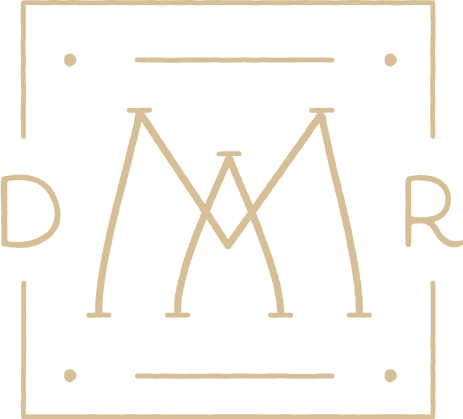AESTHETICS
Sweat Reduction Treatment
Excessive perspiration is a common problem and can be difficult to manage! Thankfully, Botox is an effective solution for those who do not respond to topical treatment with anti-perspirants. Whether it affects your armpits, palm of hands, or soles of the feet…when sweat mixes with skin bacteria it can produce bad odours which can be embarrassing, affect your self-confidence, and ruin your clothes.
Prices
Prices start at £375
Please see the booking page for details of cost per body area
HOW LONG DOES IT TAKE?
Please allow 30 minutes for your treatment
WHAT TYPE OF BOTOX DO WE USE?
This clinic uses two types of butulinum toxin: Botox & Bocouture
NEW TO BOTOX?
All new patients will have a no obligation consultation first to assess suitability, answer all your questions and fully explain how it works before going ahead with a treatment
What is it?
Botulinum Toxin A, known as Botox, is used to reduce sweat production. When used in combination with an anti-bacterial cleaning solution, any associated body odour will be eliminated.
How does it work?
Botox treatment blocks the sympathetic nerve signal to the sweat glands to reduce sweat production.
Is it right for you?
Hyperhidrosis (excessive sweating) is usually caused by an overactive sympathetic nervous system and, although usually harmless, it is important to consult your GP first to ensure there is no identifiable cause for your symptoms.
What to expect
1. Consultation
At your consultation, we will assess your medical health to ensure treatment is safe for you and form an appropriate treatment plan for you. We will discuss common side effects and possible complications before signing a consent form.
2. Treatment
At treatment, a fine needle is used to inject the medication under the skin. The number of injections will depend on the size of area we are treating. A topical anaesthetic cream may be used to the numb the skin if treatment involves a large area.
3. Review 2 weeks later
How long does it last?
Is it safe?
Botox is safe but not risk free.
You may be surprised to know that it has been used for 200 years. In 1822 a German doctor Justinius Kerner suggested its use to treat excessive sweating (hyperhidrosis). It is now a known treatment for this condition and widely used for other medical and cosmetic conditions.
Treatment should be avoided if you:
-
Are pregnant or breast feeding
-
Are taking aminoglycoside antibiotics (such as Gentamicin)
-
Are taking blood-thinning medication (such as Warfarin)
-
Have a neurological condition affecting the nerves and muscles (such as Myaesthenia Gravis, Eaton-Lambert Syndrome) or had a recent operation using general anaesthetic
-
Have a known previous allergy to botulinum toxin, egg, or human albumin.
If treatment with Botulinum Toxin A is not safe, alternitive treatments include:
-
Topical anti-perspirants
Side effects
-
Common side effects include redness, swelling, bruising, tenderness
-
Uncommon side effects include increased sweating elsewhere.
-
Adverse reactions include localised infection, allergic hypersensitivity reactions, cardiac arrhythmia/infarction.
What products do you use?
Botox™ (Onabotulinum toxin A by Allergan) is licensed for the treatment of frown lines and crow’s feet. It is the leading brand and more suited to mature skin types.
Bocouture (be Merz) is licensed for the treatment of frown lines, horizontal forehead lines, and crow’s feet. It is suited to most skin types.
The innovation in its production includes an extensive purification process to remove complexing proteins, leaving pure neurotoxin, which is thought to reduce the risk of forming anti-bodies and, thereby, give longer lasting effects.
Neither of these products contains egg protein or any animal products. Both contain albumin, a protein from human blood. No cases of contamination have been reported from licensed products.
Precare advice
-
If you become unwell or develop an active skin infection, please contact the clinic as your treatment may need to be postponed for your safety.
-
Be aware some medications or supplements can increase your risk of bruising and it may be advisable to stop taking these 1 week before treatment
-
Ginkgo Biloba, Omega-3, Ginseng, St john’s wort, Vitamin A, C, or E ○ Consider stopping Aspirin, Ibuprofen (other NSAIDs)
-
If you have any questions, please contact the clinic.
-
Aftercare advice
-
Keep the treated area clean and dry to prevent infection.
-
Avoid vigorous exercise, extremes of temperature for 4-6 hours after treatment.
-
Avoid alcohol and non-steroidal anti-inflammatories (such as ibuprofen) for 24 hours to reduce the risk of bruising. Take paracetamol for any discomfort.
-
Reactions are usually mild and last up to 1 week (see side-effects).
-
Bruising can be improved by applying arnica cream, eating pineapple cores (containing bromelain), and avoiding blood-thinning medications.
-
Contact the clinic if any unexpected side effects occur.
-
Severe allergic reactions need immediate medical attention at your nearest Emergency Department by calling 999 for an ambulance.
-
Symptoms can include shortness of breath, wheezing, difficulty in swallowing, swelling of the tongue, eyelids, lips.
